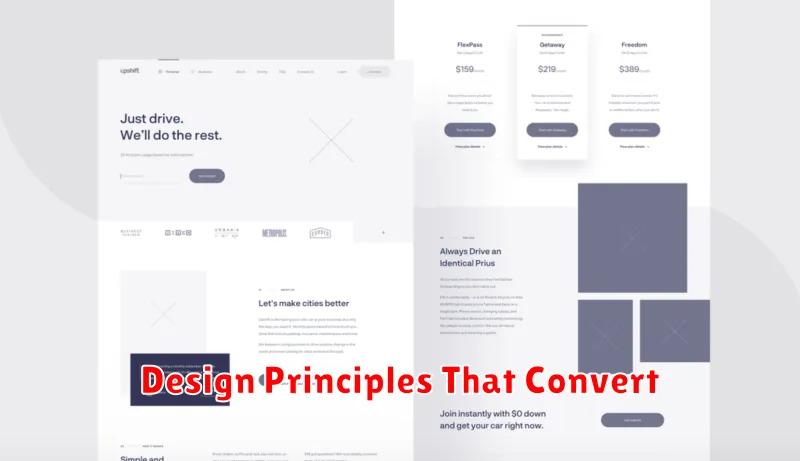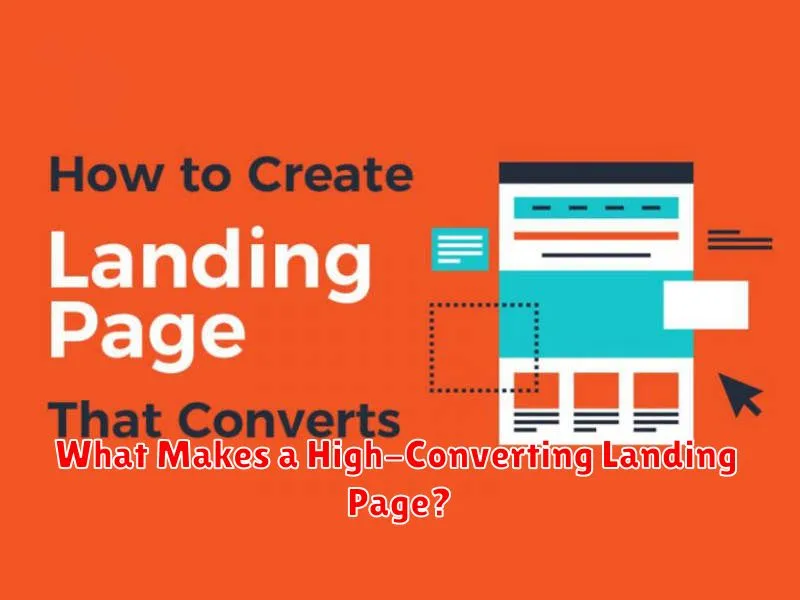Creating a high-converting landing page is crucial for any successful online marketing campaign. A landing page isn’t just a pretty webpage; it’s a strategically designed destination built with a singular purpose: converting visitors into leads or customers. Understanding what elements contribute to a high conversion rate is essential for maximizing your return on investment and achieving your marketing objectives. This article will delve into the key factors that differentiate a standard landing page from a high-converting landing page, providing actionable insights to optimize your own landing pages for maximum impact.
From compelling headlines and persuasive copy to clear calls-to-action and user-friendly design, a multitude of factors influence landing page conversions. We’ll explore the importance of a strong value proposition, the role of persuasive design elements, and the strategic use of A/B testing to continually refine and improve your landing page performance. Discover how to create high-converting landing pages that effectively capture leads, drive sales, and ultimately contribute to the success of your business. This guide will provide you with the knowledge and tools necessary to transform your landing pages from passive webpages into powerful conversion machines.
The Role of Landing Pages in Digital Marketing
Landing pages play a crucial role in digital marketing campaigns. They serve as a dedicated destination for visitors arriving from various sources, such as paid advertising, social media, or email marketing.
Unlike a general website homepage, a landing page is specifically designed to achieve a single, focused objective, often a conversion. This objective could be anything from lead generation (capturing contact information) to driving sales by encouraging a purchase.
By eliminating distractions and presenting a clear call to action, landing pages help to improve conversion rates and maximize the return on investment (ROI) of marketing efforts.
Design Principles That Convert

Effective landing page design hinges on key principles that guide visitor behavior towards conversion. Clarity is paramount, ensuring the value proposition is immediately understood. A clear call to action (CTA) is essential, using strong verbs and visually prominent design.
Visual hierarchy guides the eye through the page, emphasizing key elements like the headline and CTA. Maintaining consistency with the overall brand aesthetic builds trust and reinforces the message. Finally, mobile responsiveness is crucial for optimal viewing across devices.
Crafting a Clear and Compelling CTA
A clear and compelling call to action (CTA) is crucial for landing page conversions. It directs visitors towards the desired action, whether it’s signing up, purchasing, or downloading a resource.
The CTA should be easily visible and use action-oriented language. Words like “Get Started,” “Download Now,” or “Learn More” create a sense of urgency and encourage immediate action. Clarity is key; visitors should understand exactly what will happen when they click the button.
The CTA’s design also matters. Use contrasting colors to make it stand out and ensure it’s visually appealing. Keeping the button text concise and the design clean contributes to a more effective CTA.
Using Trust Elements: Reviews and Badges
Trust elements are crucial for boosting conversions. Displaying reviews from satisfied customers builds credibility and encourages potential customers to trust your brand. Showcase both positive and negative reviews (if any) to demonstrate transparency.
Badges, such as security seals or industry certifications, provide further reassurance. These visual cues signal legitimacy and adherence to standards, increasing visitor confidence and encouraging them to complete desired actions.
Fast Loading Time and Mobile Optimization
In today’s fast-paced digital world, speed is paramount. A slow-loading landing page can drastically impact your conversion rates. Users expect near-instantaneous page loads, and delays can lead to frustration and abandonment.
Mobile optimization is equally crucial. With the majority of internet traffic coming from mobile devices, ensuring your landing page is responsive and provides a seamless mobile experience is non-negotiable for high conversion rates. This includes optimizing images, using a mobile-first design approach, and simplifying navigation for touchscreens.
Highlighting Unique Selling Proposition
A high-converting landing page effectively communicates its unique selling proposition (USP). This is what differentiates your product or service from the competition. Clearly showcasing your USP helps visitors understand the distinct value you offer.
Focus on the key benefit that sets you apart. Is it superior quality, innovative technology, or exceptional customer service? Make this benefit prominent and easily digestible.
Effective Use of Images and Videos
Visuals are crucial for engaging visitors. High-quality images and videos can significantly improve the user experience and contribute to higher conversion rates. They should be relevant to your offer and target audience.
Images should be professionally shot and optimized for web performance. Avoid generic stock photos. Instead, opt for authentic imagery that reflects your brand and resonates with your target audience.
Videos can effectively demonstrate product features or explain complex concepts. Keep videos concise and focused on a clear call to action.
Form Optimization for Better Signups
Forms are crucial for capturing leads and driving conversions. Optimizing your forms can significantly impact your signup rates.
Minimize form fields. Only ask for essential information. Longer forms can deter potential signups.
Use clear and concise labels. Ensure users understand what information is required in each field.
Implement user-friendly design. Consider input field sizes, button placement, and mobile responsiveness for a seamless user experience.
A/B Testing Layouts and Copy
A/B testing is crucial for optimizing landing page conversions. This involves creating two versions (A and B) of your landing page with variations in layout or copy.
For instance, version A might feature a single-column layout, while version B uses a two-column layout. Similarly, you might test different headlines or call-to-action text.
By analyzing which version performs better in terms of conversions, you can identify the most effective design and messaging for your target audience.
Tracking Performance with Heatmaps
Heatmaps provide valuable visual insights into user behavior on your landing page. They track mouse movements, clicks, and scroll depth, revealing where visitors are engaging and where they’re losing interest. This data is crucial for understanding what elements are working and which need improvement.
By analyzing heatmap data, you can identify key areas of interest, such as popular call-to-action buttons or engaging content sections. Conversely, cold spots on the heatmap indicate areas that are being ignored, suggesting potential issues with design, content, or placement. This allows you to optimize your landing page for better conversions.

